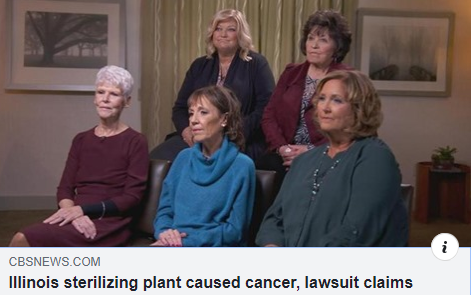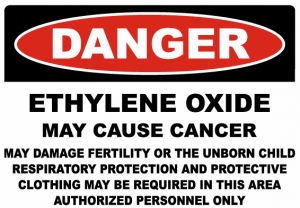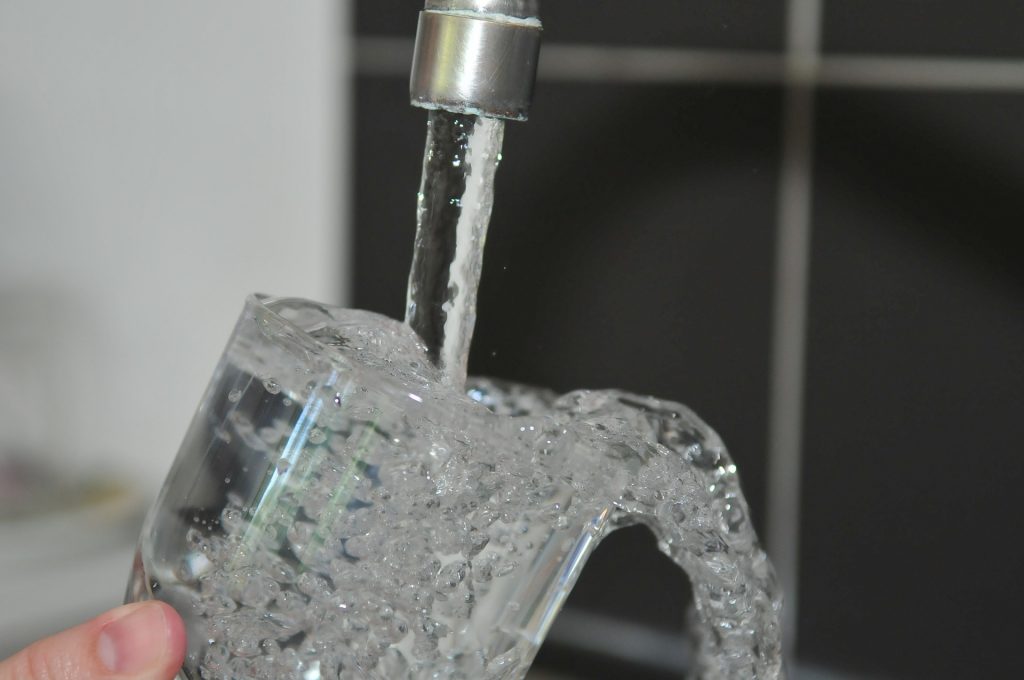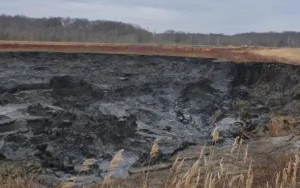 The Collins Law Firm has filed a lawsuit against Sterigenics alleging that its client, 16-year-old Yasmeen Harrison, has battled cancer for most of her young life because of Sterigenics’ ethylene oxide emissions. According to the lawsuit, Sterigenics knowingly emitted “massive and unnecessary amounts of ethylene oxide, an invisible, odorless carcinogen” into neighboring communities, including Willowbrook, Burr Ridge, and Darien, starting in 1985 and continuing through 2019. As a result, residents like Yasmeen and her family, who lived, worked and attended school in those communities were “exposed to an unacceptably high level of ethylene oxide and therefore exposed to an unacceptably high risk of cancer”, said attorney Shawn Collins. Moreover, Sterigenics ignored an IL EPA engineer’s 1984 letter alerting them to the cancer risk associated with ethylene oxide exposure and forged ahead with the facility without warning neighbors of the danger.
The Collins Law Firm has filed a lawsuit against Sterigenics alleging that its client, 16-year-old Yasmeen Harrison, has battled cancer for most of her young life because of Sterigenics’ ethylene oxide emissions. According to the lawsuit, Sterigenics knowingly emitted “massive and unnecessary amounts of ethylene oxide, an invisible, odorless carcinogen” into neighboring communities, including Willowbrook, Burr Ridge, and Darien, starting in 1985 and continuing through 2019. As a result, residents like Yasmeen and her family, who lived, worked and attended school in those communities were “exposed to an unacceptably high level of ethylene oxide and therefore exposed to an unacceptably high risk of cancer”, said attorney Shawn Collins. Moreover, Sterigenics ignored an IL EPA engineer’s 1984 letter alerting them to the cancer risk associated with ethylene oxide exposure and forged ahead with the facility without warning neighbors of the danger.
The lawsuit, filed in the Circuit Court of Cook County, was brought on behalf of Yasmeen Harrison, who was diagnosed in 2005 with acute lymphoblastic leukemia (ALL) as a toddler. But that was just the beginning of her arduous journey. After a brief period in remission, the cancer returned in 2007. To combat this recurrence,  Yasmeen underwent a bone marrow transplant, but then contracted another cancer—myelodysplastic syndrome– in 2009. After a second bone marrow transplant and rocky recovery, things seemed to be looking up, when it was discovered in 2017 that Yasmeen had yet another cancer. This time it was kidney cancer. Surgery followed and today that cancer is in remission. The lawsuit alleges that Yasmeen’s exposure to Sterigenics’ ethylene oxide as an infant, as well as her mother’s exposure while pregnant, contributed to her cancer.
Yasmeen underwent a bone marrow transplant, but then contracted another cancer—myelodysplastic syndrome– in 2009. After a second bone marrow transplant and rocky recovery, things seemed to be looking up, when it was discovered in 2017 that Yasmeen had yet another cancer. This time it was kidney cancer. Surgery followed and today that cancer is in remission. The lawsuit alleges that Yasmeen’s exposure to Sterigenics’ ethylene oxide as an infant, as well as her mother’s exposure while pregnant, contributed to her cancer.
“Helping people like Yasmeen who have been irreparably harmed by the reckless and wrongful conduct of polluters is the reason we practice law. We believe that the lawsuits we are filing will bring justice to Yasmeen, her family, and the other families who are suffering from devastating illnesses. Yasmeen has been so brave and tenacious throughout her long battle; it is now time for us to take up the mantle and fight for her.” said Shawn Collins, partner at The Collins Law Firm.
 The Collins Law Firm has filed a lawsuit on behalf of six former teachers at Hinsdale South High School who have been stricken with cancer. The lawsuit claims that the teachers’ cancer was caused by their exposure to Sterigenics’ ethylene oxide during the time they worked at Hinsdale South. Moreover, attorney Shawn Collins, claims that Sterigenics knew that their emissions could cause health risks to neighbors before they began operating. For coverage of the national news story on CBS, click on the link below:
The Collins Law Firm has filed a lawsuit on behalf of six former teachers at Hinsdale South High School who have been stricken with cancer. The lawsuit claims that the teachers’ cancer was caused by their exposure to Sterigenics’ ethylene oxide during the time they worked at Hinsdale South. Moreover, attorney Shawn Collins, claims that Sterigenics knew that their emissions could cause health risks to neighbors before they began operating. For coverage of the national news story on CBS, click on the link below: Illinois Personal Injury Lawyer Blog
Illinois Personal Injury Lawyer Blog


 In the summer of 2008, the Chinese city of Beijing hosted the Olympic Games. The event has frequently been called the most polluted Olympics ever and many remember seeing the images of Beijing skyscrapers barely visible through a thick layer of hazy smog. What many Americans may not know, however, is that the same type of air pollution from Particulate Matter emissions has been linked to the premature deaths of many women and men right here in the United States.
In the summer of 2008, the Chinese city of Beijing hosted the Olympic Games. The event has frequently been called the most polluted Olympics ever and many remember seeing the images of Beijing skyscrapers barely visible through a thick layer of hazy smog. What many Americans may not know, however, is that the same type of air pollution from Particulate Matter emissions has been linked to the premature deaths of many women and men right here in the United States. October is Breast Cancer Awareness Month, an annual health campaign that raises awareness and support for the 1 in 8 women in the United States that will develop breast cancer in her lifetime. Bringing awareness to this disease is important because breast cancer is the most common cancer in women worldwide. Sadly, on average a woman in the United States is diagnosed with breast cancer every 2 minutes. Breast cancer also impacts men, though it is rare.
October is Breast Cancer Awareness Month, an annual health campaign that raises awareness and support for the 1 in 8 women in the United States that will develop breast cancer in her lifetime. Bringing awareness to this disease is important because breast cancer is the most common cancer in women worldwide. Sadly, on average a woman in the United States is diagnosed with breast cancer every 2 minutes. Breast cancer also impacts men, though it is rare. “The announcement that Sterigenics has decided not to reopen its Willowbrook facility, while a victory for the people fighting Sterigenics’ unsafe ethylene oxide emissions, is also a sad reminder that it should never have been allowed to operate there in the first place. For years, Sterigenics spewed its cancer-causing chemical into a neighborhood filled with schoolchildren, teachers, moms, and dads who had no idea they were ever in danger. Dozens of lawsuits filed against the company claim that Sterigenics’ chemical emissions gave them cancer or, even worse, caused the death of a family member. I hope news of the company’s closing is of some solace to them, and that no community will ever again be treated as callously as they were.”
“The announcement that Sterigenics has decided not to reopen its Willowbrook facility, while a victory for the people fighting Sterigenics’ unsafe ethylene oxide emissions, is also a sad reminder that it should never have been allowed to operate there in the first place. For years, Sterigenics spewed its cancer-causing chemical into a neighborhood filled with schoolchildren, teachers, moms, and dads who had no idea they were ever in danger. Dozens of lawsuits filed against the company claim that Sterigenics’ chemical emissions gave them cancer or, even worse, caused the death of a family member. I hope news of the company’s closing is of some solace to them, and that no community will ever again be treated as callously as they were.” “I am disgusted, but not surprised, by the Illinois EPA’s decision to grant Sterigenics a permit to reopen. This is the same state agency that, in 1984, gave the operator of the Willowbrook plant a permit to emit ethylene oxide into the local community in quantities that the state knew posed an unacceptable cancer risk to local residents.
“I am disgusted, but not surprised, by the Illinois EPA’s decision to grant Sterigenics a permit to reopen. This is the same state agency that, in 1984, gave the operator of the Willowbrook plant a permit to emit ethylene oxide into the local community in quantities that the state knew posed an unacceptable cancer risk to local residents.  In the United States, more than 13 million households rely on private wells to get their drinking water. But unlike municipal sources of drinking water, like a town or city, private wells are not regulated by the government. Instead, private well owners are responsible for the safety of their own drinking water.
In the United States, more than 13 million households rely on private wells to get their drinking water. But unlike municipal sources of drinking water, like a town or city, private wells are not regulated by the government. Instead, private well owners are responsible for the safety of their own drinking water. shoppers are looking for brands that are “free of” certain ingredients. As a result, new brands positioning themselves as “cleaner” alternatives to traditional cosmetics are exploding. “Natural” brands made up approximately one-quarter of all higher-end skincare sales in 2018, reflecting this consumer trend towards “clean” and “natural” products.
shoppers are looking for brands that are “free of” certain ingredients. As a result, new brands positioning themselves as “cleaner” alternatives to traditional cosmetics are exploding. “Natural” brands made up approximately one-quarter of all higher-end skincare sales in 2018, reflecting this consumer trend towards “clean” and “natural” products. Among news of federal regulations being scaled back and reports of the drastic climate change situation, it’s nice to hear about a state taking action to protect the environment. This summer, Illinois did just that. Governor Pritzker signed the
Among news of federal regulations being scaled back and reports of the drastic climate change situation, it’s nice to hear about a state taking action to protect the environment. This summer, Illinois did just that. Governor Pritzker signed the  The companies who sell plug-in air fresheners advertise how they make your house smell clean and fresh, and show you photos that make it appear as if the fresheners are bringing nature right into your home. What the commercials don’t say is that plug-in air fresheners may also be bathing your house in toxic chemicals that can harm your health.
The companies who sell plug-in air fresheners advertise how they make your house smell clean and fresh, and show you photos that make it appear as if the fresheners are bringing nature right into your home. What the commercials don’t say is that plug-in air fresheners may also be bathing your house in toxic chemicals that can harm your health. The Collins Law Firm has filed a lawsuit against Sterigenics alleging that its client, 16-year-old Yasmeen Harrison, has battled cancer for most of her young life because of Sterigenics’ ethylene oxide emissions. According to the lawsuit, Sterigenics knowingly emitted “massive and unnecessary amounts of ethylene oxide, an invisible, odorless carcinogen” into neighboring communities, including Willowbrook, Burr Ridge, and Darien, starting in 1985 and continuing through 2019. As a result, residents like Yasmeen and her family, who lived, worked and attended school in those communities were “exposed to an unacceptably high level of ethylene oxide and therefore exposed to an unacceptably high risk of cancer”, said attorney Shawn Collins. Moreover, Sterigenics ignored an IL EPA engineer’s 1984 letter alerting them to the cancer risk associated with ethylene oxide exposure and forged ahead with the facility without warning neighbors of the danger.
The Collins Law Firm has filed a lawsuit against Sterigenics alleging that its client, 16-year-old Yasmeen Harrison, has battled cancer for most of her young life because of Sterigenics’ ethylene oxide emissions. According to the lawsuit, Sterigenics knowingly emitted “massive and unnecessary amounts of ethylene oxide, an invisible, odorless carcinogen” into neighboring communities, including Willowbrook, Burr Ridge, and Darien, starting in 1985 and continuing through 2019. As a result, residents like Yasmeen and her family, who lived, worked and attended school in those communities were “exposed to an unacceptably high level of ethylene oxide and therefore exposed to an unacceptably high risk of cancer”, said attorney Shawn Collins. Moreover, Sterigenics ignored an IL EPA engineer’s 1984 letter alerting them to the cancer risk associated with ethylene oxide exposure and forged ahead with the facility without warning neighbors of the danger. Yasmeen underwent a bone marrow transplant, but then contracted another cancer—myelodysplastic syndrome– in 2009. After a second bone marrow transplant and rocky recovery, things seemed to be looking up, when it was discovered in 2017 that Yasmeen had yet another cancer. This time it was kidney cancer. Surgery followed and today that cancer is in remission. The lawsuit alleges that Yasmeen’s exposure to Sterigenics’ ethylene oxide as an infant, as well as her mother’s exposure while pregnant, contributed to her cancer.
Yasmeen underwent a bone marrow transplant, but then contracted another cancer—myelodysplastic syndrome– in 2009. After a second bone marrow transplant and rocky recovery, things seemed to be looking up, when it was discovered in 2017 that Yasmeen had yet another cancer. This time it was kidney cancer. Surgery followed and today that cancer is in remission. The lawsuit alleges that Yasmeen’s exposure to Sterigenics’ ethylene oxide as an infant, as well as her mother’s exposure while pregnant, contributed to her cancer.